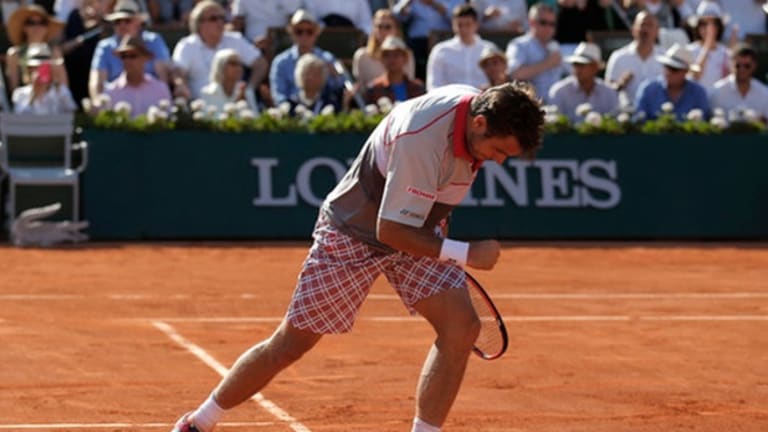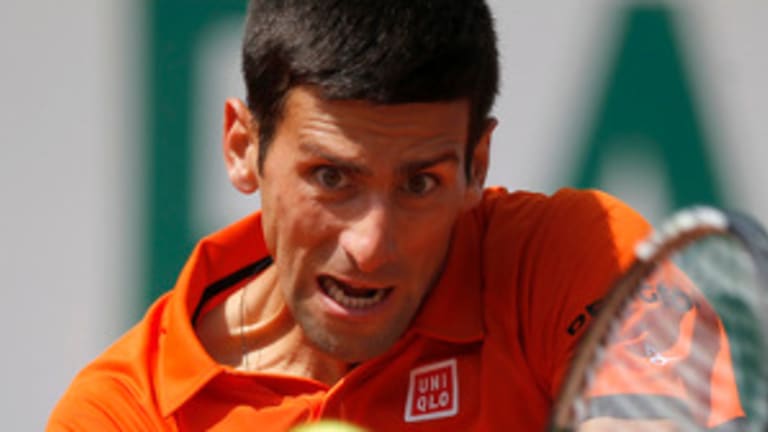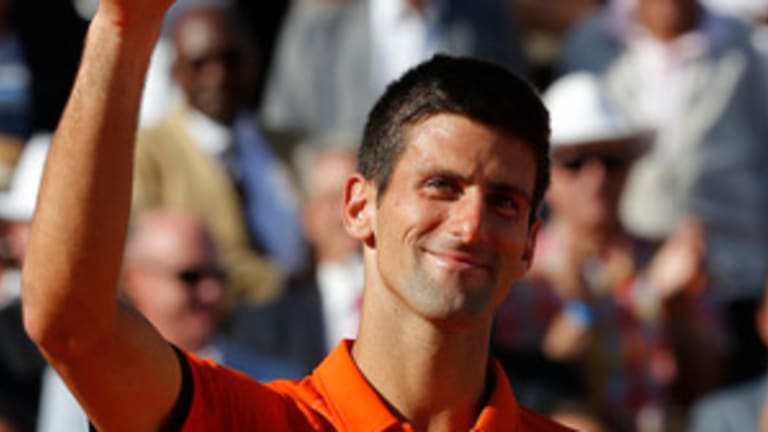The French Open final had reached a Novak Djokovic moment. He was down two sets to one to Stan Wawrinka, but was up 3-1 in the fourth set. As he had done so many times before this year, Djokovic had started well, suffered a mid-match lull, and then, just when he seemed to be drifting into danger, had turned the tables back around on his opponent.
Now Djokovic faced a break point, but as the rally progressed, it seemed sure to go his way. The two players traded heavy ground strokes and moved each other around long enough for a buzz to start in Court Philippe Chatrier—who was finally going to miss? On virtually any other day before this one in 2015, the answer would have been Wawrinka. He has always been the more erratic player, while Djokovic has always thrived on attrition, on making one more ball, on wearing his opponent down physically and demoralizing him mentally.
But a funny thing happened at the end of this point. This time it was Wawrinka who made the sliding, last-second gets from behind the baseline; and this time it was Djokovic, with a frustrated and slightly weary swipe at the ball, who put a forehand into the net and was broken. Instead of bouncing back from his lull to run away with the match, as he did against Wawrinka in a 6-0 fifth set at the Australian Open, and as he had the previous day in a 6-1 fifth set over Andy Murray, Djokovic lost six of the last seven games, and his third French Open final, 4-6, 6-4, 6-3, 6-4.
In my preview of this match, I wrote that Wawrinka would have to disrupt Djokovic’s ground-stroke groove and break down his baseline fortress by essentially going for broke and redlining his game for three sets. And yes, Wawrinka played what he called the best match of his career. But it turned out that he didn’t need to play hit-and-hope tennis; it turned out that he was also just as solid and steady as the world No. 1 from the back of the court. He matched Djokovic’s consistency—Stan had 45 unforced errors to Nole’s 41—while hitting with much more firepower. Wawrinka hit 60 winners to Djokovic’s 30, and commanded the baseline without having to play with an uncomfortable amount of risk.
“He completely deserves to win,” Djokovic said afterward, in an irrefutable bit of post-match analysis. “He played much better tennis, was more courageous. I tried my best, but it wasn’t the day.”



